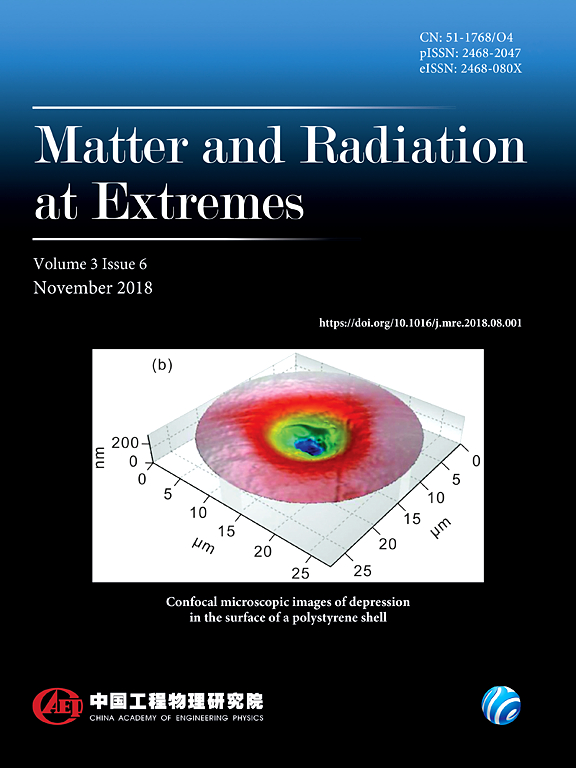等离子体孔径产生的强二次谐波光的高阶模
IF 4.7
1区 物理与天体物理
Q1 PHYSICS, MULTIDISCIPLINARY
引用次数: 3
摘要
由于等离子体光学元件能够维持极高振幅的电磁场、瞬态密度和场分布,因此人们正在开发用于放大、压缩和调节高功率激光脉冲的等离子体光学元件。我们最近展示了使用相对论性等离子体孔径(在高功率激光脉冲与超薄箔靶相互作用期间产生)来调整产生的强基次谐波光的时空特性的潜力[Duff et al., Sci。众议员10,105(2020)]。本文从数值上探讨了强激光脉冲与预制孔径目标的相互作用,以产生具有高阶空间模式的二次谐波激光。最大的产生效率发现孔径直径接近全宽度在激光聚焦的一半最大和微米尺度的目标厚度。产生的空间模式强烈依赖于驱动激光脉冲的偏振,这使得线性极化的TEM01模式和圆极化的Laguerre-Gaussian LG01模式之间的变化成为可能。这演示了使用等离子体孔径来产生具有可选择空间模式结构的强高频光。本文章由计算机程序翻译,如有差异,请以英文原文为准。
High order modes of intense second harmonic light produced from a plasma aperture
Because of their ability to sustain extremely high-amplitude electromagnetic fields and transient density and field profiles, plasma optical components are being developed to amplify, compress, and condition high-power laser pulses. We recently demonstrated the potential to use a relativistic plasma aperture—produced during the interaction of a high-power laser pulse with an ultrathin foil target—to tailor the spatiotemporal properties of the intense fundamental and second-harmonic light generated [Duff et al., Sci. Rep. 10, 105 (2020)]. Herein, we explore numerically the interaction of an intense laser pulse with a preformed aperture target to generate second-harmonic laser light with higher-order spatial modes. The maximum generation efficiency is found for an aperture diameter close to the full width at half maximum of the laser focus and for a micrometer-scale target thickness. The spatial mode generated is shown to depend strongly on the polarization of the drive laser pulse, which enables changing between a linearly polarized TEM01 mode and a circularly polarized Laguerre–Gaussian LG01 mode. This demonstrates the use of a plasma aperture to generate intense higher-frequency light with selectable spatial mode structure.
求助全文
通过发布文献求助,成功后即可免费获取论文全文。
去求助
来源期刊

Matter and Radiation at Extremes
Physics and Astronomy-Atomic and Molecular Physics, and Optics
CiteScore
8.60
自引率
9.80%
发文量
160
审稿时长
15 weeks
期刊介绍:
Matter and Radiation at Extremes (MRE), is committed to the publication of original and impactful research and review papers that address extreme states of matter and radiation, and the associated science and technology that are employed to produce and diagnose these conditions in the laboratory. Drivers, targets and diagnostics are included along with related numerical simulation and computational methods. It aims to provide a peer-reviewed platform for the international physics community and promote worldwide dissemination of the latest and impactful research in related fields.
 求助内容:
求助内容: 应助结果提醒方式:
应助结果提醒方式:


